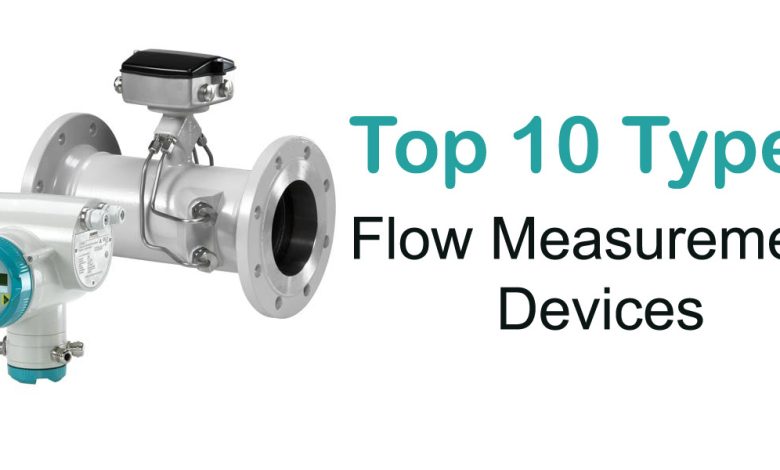What Types of Flow Instruments are Necessary for Industries?

Flow measurement instruments are the devices that measure how quickly a fluid such as air, water, or any other type of liquid is flowing. Types of flow instruments range from basic to complex and can be essential in many different industries. This article will discuss some of the most common types, their uses, and their benefits.
Types of flow measurement instruments
There are various flow measurement instruments essential for industrial use. You can always use the best device, depending on your application. Some of the most common types include:
Ultrasonic flowmeter
It is a flow measurement device that uses ultrasonic waves to measure the flow of a fluid. Ultrasonic flowmeters are accurate and can be essential for both liquids and gasses.
Benefits:
i) Widely accepted as an accurate flowmeter
ii) Can be used with most types of fluids, including gas and liquid
iii) Non-invasive measurement
iv) Lower maintenance cost
Disadvantage
Ultrasonic flowmeters usually have a higher initiative set up of the cost.
Turbine flowmeter
This type of meter uses a spinning turbine to measure the flow rate. The turbine place in the flowing liquid and spins as the fluid flows past it. The faster the turbine spins, the more flow is present and then you can measure the accurate flow rate with the help of turbine flow meter.
Benefits:
i) Can be used with a variety of fluids, including gas and liquid
ii) Accurate flow measurement
iii) Low maintenance cost
iv) The digital output offers one with a direct totalizing of different types of meters
Disadvantages:
Turbine meters can be affected by changes in the fluid’s temperature, density, and viscosity. They are also more expensive than other types of flow meters.
Vortex flowmeter
It is a type of flow measurement unit that uses a spinning vane to measure the flow of a fluid. The faster the vane spins, the more flow is present. When the compression alters the vortex system, then the vortices detects.
Benefits:
i) Compact size
ii) This flow meter uses with a variety of fluids, including gas and liquid
iii) Inexpensive compared to other types of meters
iv) It is always analog or digital output.
Disadvantages:
Vortex flowmeters are not as accurate as other meters and can be affected by changes in the fluid’s temperature, density, and viscosity.
It is always critical to install a vortex flowmeter.
Coriolis mass flowmeters
Coriolis Mass Flowmeters installs in a pipeline system to measure the mass flow rate of fluids with high accuracy. They can be essential for liquid or gas and work by measuring the movement of fluid particles that rotate around an axis as they pass through a sensitive tube placed within another one, which is also turning at right angles to it.
Benefits:
i) Can be used with a variety of fluids, including gas and liquid
ii) High accuracy flow measurement
iii) Low maintenance cost
iv) It has both an analog and digital output.
Disadvantages:
Coriolis mass flowmeters are the most expensive type of flowmeter. They are also susceptible to vibration and require a straight section of pipe before and after the meter for proper functioning.
Positive displacement flowmeters
Positive displacement flowmeters work by measuring the volume of fluid that passes through a given area over time. This mechanical device is often used for low-flow rates and can be used with either liquids or gasses.
Benefits:
i) Can be essential with a variety of fluids, including gas and liquid
ii) Accurate flow measurement
iii) Low maintenance cost
iv) It has both an analog and digital output.
Disadvantages:
Positive displacement flowmeters are not as accurate as other meters and it affects by changes in the fluid’s temperature, density, and viscosity. They also tend to have a high initial cost.
Thermal mass flowmeters
A thermal mass flowmeter works by measuring the temperature of a fluid. As different types of liquids have different specific heat, this type of meter can estimate their flow rates based on how much they warm or cool down as they pass through it.
This means no moving parts and very little maintenance requires with these meters.
Benefits:
i) Can be used with a variety of fluids, including gas and liquid
ii) Low maintenance cost
iii) No moving parts or wear items install in the flow meter. It has both an analog and digital output.
Disadvantages:
Thermal mass flowmeters are not as accurate as other meters and it affects by changes in the fluid’s temperature, density, and viscosity.
Conclusion
Flow measurement devices come in different types. Those flow meters mention above are six of the most common types use in various industries. Plant managers and engineers need to choose the right kind of meter for their specific needs to ensure accurate flow measurement. Before purchasing all these types of flow instruments, read this article carefully and check which flow device will be the best instrument for your industry’s use.




